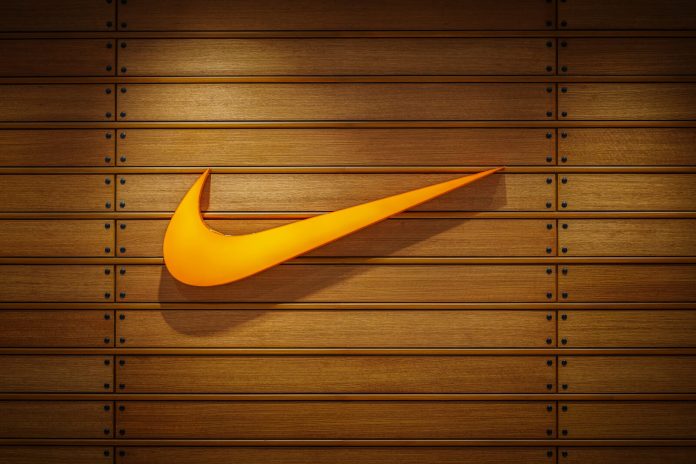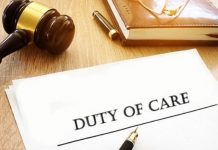This article is written by Shruti Yadav, currently pursuing an integrated BA-LL.B degree from Jagran Lakecity, Bhopal. This article talks about the dispute between Nike and MSCHF.
Table of Contents
Introduction
Trademark infringement is the unauthorized use of a trademark or service mark on or in connection with goods and/or services in a manner that is likely to cause confusion, deception, or mistake about the source of the goods and/or services. Trademark infringement occurs when a third party violates the trademark holder’s rights, such as the exclusive use of a work for a certain period of time. The music, film, and fashion sectors are three of the most well-known businesses that experience significant trademark infringement. Contingent liabilities are funds set aside in the event of possible litigation in infringement situations. Nike Inc. is an American multinational corporation that designs, develops, manufactures, and markets footwear, clothes, equipment, accessories, and services around the world. MSCHF is an American art collective with headquarters in Brooklyn, New York. MSCHF has created a wide range of artworks, including browser plugins, shoes, tangible goods, social media platforms, and pictures. The two American companies butted head recently in a copyright infringement case over MSCHF’s “Satan Shoes“, details about which are mentioned further.
About the case
In a recent controversy that occurred amidst Nike and conceptual art collective MSCHF over the so-called “Satan Shoes, ” in collaboration with singer Lil Nas X was created.
Released at the end of March, made using the modified pair of Nike Air Max 97 featured a pentagram pendant and a reference to a verse from the Gospel of Luke (“I saw Satan fall like lightning from heaven”, 10:18). They contained 60cc of red ink, visible from the transparent section of the sole and “one drop of human blood”.
MSCHF released 666 pairs of shoes that they sold out in less than a minute. Religious and conservative customers asked for a boycott, believing it was an official Nike collaboration. This isn’t the first time MSCHF has referenced the Bible in one of its products. The business previously released a pair of ‘Jesus Shoes,’ which were customised Nike Air Max 97s with holy water collected from the Jordan River in the soles. MSCHF’s earlier “Jesus Shoes” were never a source of concern for Nike, which distanced itself from the product and sued MSCHF for “trademark infringement and dilution, false designation of origin, and unfair competition.”
Nike’s allegations
The trademark infringement lawsuit was registered before the US District Court for the Eastern District of New York wherein it was asserted that MSCHF’s personalised “Satan Shoes” was not approved or authorised by Nike, according to the company. A number of social media users have reportedly threatened to boycott the sportswear brand because of the contentious new footwear, according to the report. Nike also alleged:
- MSCHF’s ‘Satan Shoes’ launch implied authorisation or consent from Nike owing to the exhibition of their trademarked ‘swoosh’ symbol.
- Apparently, there is an ambiguity and deceit in regards to the origination of the “Satan Shoes”.
- This transpired in a severe blow to Nike’s well-established goodwill, with irate customers condemning the release and boycotting the company’s original items.
- MSCHF, through the launch of its customised shoes, attempted to capitalise on Nike’s invaluable goodwill and reputation.
- The use of Nike’s trademark caused dilution, resulting in losses both financially and in terms of Nike’s goodwill and reputation.
Nike’s claims
Nike’s demands in the suit include:
- A permanent injunction order about manufacturing, transporting, promoting, advertising, publicizing, distributing, or selling Satan shoes displaying Nike’s well-established ‘Swoosh’ trademark.
- An instruction to bring all of the disputed merchandise to Nike for “destruction.”
- Damages suffered by Nike as a result of the trial procedures should be compensated by MSCHF.
- An order of profits collected by MSCHF on the sale of “Satan Shoes.”
- Costs, expenses, and legal fees, as well as statutory and extra damages.
- Voluntarily recall buying back not only the 665 sneakers sold (sneakers number 666th were supposed to be a giveaway, but they were scrapped after the judge’s temporary order) but also any Jesus Shoes for their original retail prices to remove them in the way from circulation.
- “Purchasers who choose not to return their shoes and later encounter a product issue, defect, or health concern should contact MSCHF, not Nike“, Nike concluded in its official statement and petition.
MSCHF’s counter arguments
MSCHF argued that the Satan Shoes were “individually-numbered works of art” that “push the frontiers of today’s culture through story-telling and performance art” and thus protected under the First Amendment of the United State’s Constitution. MSCHF also relied, in part, on the reasonably limited first-sale doctrine, which allows for the resale of branded goods.
Final settlement and judgement
- On April 2, 2021, a federal judge in favour of Nike issued an interim injunction prohibiting MSCHF from producing or marketing the controversial ‘Satan Shoes’ bearing the Nike trademark.
- On April 9, 2021, Nike launched an email settlement for MSCHF, which the MSCHF agreed to. The terms of the agreement included a full refund of the original retail price of ‘Satan Myth’ and the shipping cost to the buyer.
- In addition, MSCHF shook hands while remembering a pair of “Satan Shoes” and stopped manufacturing and distribution of the product. In a broad sense, Nike’s trademark claims and unfair competition were sufficient to issue a temporary injunction against MSCHF.
- This order prevented MSCHF from selling the remaining satanic shoes. 665 shoes out of the 666 pairs had already been sold out. Shortly thereafter, Nike and MSCHF reached an agreement. Under this agreement, MSCHF agreed to repurchase previously sold Satanic shoes at their original retail price and remove them from circulation, which “already served an artistic purpose.”
- MSCHF has also agreed to repurchase the previous Nike Air Max 97 “Jesus Shoes” with similar adjustments to the base shoe. A federal court judge sided with Nike. However, the effect of this order is unclear, as the latter has made it clear that it has no intention of selling another pair of shoes.
Problems with the judgement
Problem 1
Other brands that may see their products being repurposed by artists and designers may not like their interpretation and may sue them. However, this is a double-edged sword: take the case of Harlem hip hop tailor Dapper Dan, who created DIY designs in the 1980s with fabrics covered in logos from brands like Gucci or Vuitton and played a dangerously ironic game with luxury goods and logos. Sued for his pirated pieces, after Gucci’s Alessandro Michele “paid homage” to one of his jackets, Dapper Dan returned to fame, becoming an icon and collaborator of Gucci, eventually proving that bootlegs are often more original and desirable than the original products and therefore more fun for consumers.
Problem 2
The second point to decide is hypocritical, as when the anonymous designer or artist uses the famous logo, they fall under the radar of lawsuits and trademark infringement. However, when a strong name or brand decides to do so, they skip their money for a trial run or a gift or worship. For example, Nike recently conducted an illegal trial of its Army Air Force 1 sneakers inspired by the white, red, and blue USPS cardboard boxes and patches that recreates US Post‘s Priority Mail logo. However, shoes are not the only result of engagement. So it looks like when Nike has borrowed from another company, it is paying homage to the original and is “inspired” but when an independent retailer recreates Nike shoes and sells them, it violates Nike’s policy.
Trademark infringement and the US provisions
People frequently plagiarise or copy someone else’s original work without permission. Is it possible for the trademark owners to file a trademark infringement lawsuit? What are the rights of a trademark holder? What are the trademark holder’s options to seek redressal? Individuals and companies developing new works and registering for trademark protection do so to benefit from their efforts. Other parties may allow the use of the work through a license agreement or the trademark owner’s purchase of the work. However, several factors can lead other parties to trademark infringement. Reasons include high prices for approved work or lack of access to the supply of approved work. The mission of the U.S. Patent and Trademark Office (USPTO) is to foster innovation, competitiveness and economic growth, domestically and abroad, by providing high quality and timely examination of patent and trademark applications, guiding domestic and international Intellectual Property (IP) policy and delivering IP information and education worldwide. The Lanham Act of 1946 is a federal law in the United States of America that governs trademark law. The required statutory laws conceiving rules relating to trademark violations in the country are listed below.
Section 32 – remedies; infringement; innocent infringers
Anyone without the prior approval of the registrant
- Copies, falsifies, duplicates, or imitates the trademark in a way that may be misleading/misleading for the sale, sale, distribution, or advertising of related goods and services.
- Copying, falsifying, copying or imitating trademarks and applying them to labels, signs, printed material, packaging, packaging, containers or commercial advertisements promotes confusion/deception.
Must assume responsibility for civil litigation, and the registrant has the right to exhaust various remedies.
Section 43 – false designations of origin, false description or representation
Any person uses any word, term, name, symbol or device or any combination or source name or false description or misleading statement in the following ways:
- May cause confusion/error/deceive affiliation/connection with others/association.
- Distortion of others nature/characteristics/quality/geographic origin of the goods, services, or any commercial activity.
will be sued by anyone else who has reason to believe that their rights will be affected.
Remedies available to the assailant
Section 34 – injunctions; enforcement; notice of filing suit given Director
Both the Court and the plaintiff may ask the defendant to produce a report detailing his or her compliance with the injunctive order.
Section 35 – recovery of profits, damages, and costs
In case of a breach under Section 1125, the plaintiff shall be entitled to:
- Profits accruing to the defendant from sales.
- Damages sustained to the plaintiff (not exceeding three times the actual damages).
- Costs of proceedings (attorney fees in exceptional circumstances).
Section 36 – destruction of infringing articles
- Order for destruction of all labels, signs, prints, packages, wrappers, receptacles and advertisements bearing the impugned mark.
- The Court may also issue an order of delivery and destruction in the event of a deliberate breach including replication, counterfeiting, copying, or improper imitation.
Conclusion
In conclusion, trademark registration permits businesses to sue the infringers for damages, which might be in the form of real damages plus the infringer’s profits, or statutory damages. When submitting a claim for trademark infringement, businesses should be aware of the statute of limitations and any relevant defences, such as fair use.
Innovation and creativity are endless. They are the way to be more productive and kind. However, restrictions should be designed to act as a gateway to thinking in the ethical context so as to maximize the benefits to consumers and brands. The Nike-MSCHF case is a prime example of the segregation of stereotypes and developments that pertain to modern patterns of acceptance, and that malice is widespread in the industry of print and fashion. As manufacturing, marketing and participation in celebrations continue to exist, companies must ensure that these efforts do not violate the law, including federal, state laws, legal heritage and unfair competition. As this data shows, many markets are preparing to take legal action to protect their creative property. They must be done under the ambit of rules and regulations regarding them. Companies must be careful and precisely analyse the drawbacks and legal consequences associated with specialized operations.
References
- https://www.nbcnews.com/business/business-news/nike-mschf-reach-settlement-satan-shoes-trademark-lawsuit-n1263567
- https://www.mondaq.com/unitedstates/trademark/1061266/trademark-infringement-nike-v-mschf-satan-shoes-case
- https://www.jdsupra.com/legalnews/deal-with-the-devil-nike-and-mschf-4244797/
- https://www.bbc.com/news/business-56572245
- https://www.irenebrination.com/irenebrination_notes_on_a/2021/04/nike-mschf-satan-shoes-settled.html
- https://indianexpress.com/article/explained/explained-why-nike-is-suing-maker-of-satan-shoes-with-human-blood-7253139/
- https://www.news18.com/news/buzz/nike-wins-lawsuit-against-lil-nas-x-and-mschf-over-satan-shoes-with-human-blood-3600494.html
- https://www.investopedia.com/terms/c/copyright-infringement.asp
LawSikho has created a telegram group for exchanging legal knowledge, referrals, and various opportunities. You can click on this link and join:
https://t.me/joinchat/J_0YrBa4IBSHdpuTfQO_sA
Follow us on Instagram and subscribe to our YouTube channel for more amazing legal content.
 Serato DJ Crack 2025Serato DJ PRO Crack
Serato DJ Crack 2025Serato DJ PRO Crack











 Allow notifications
Allow notifications



